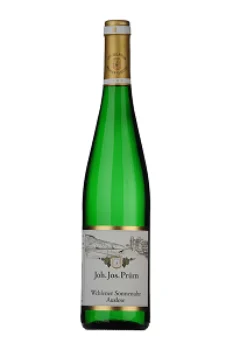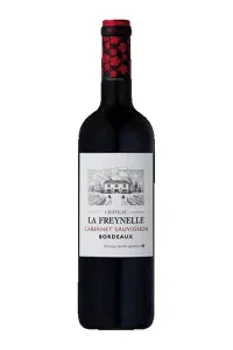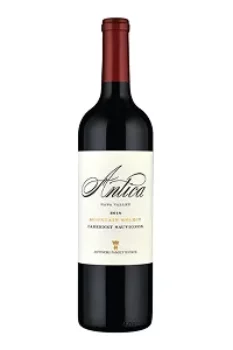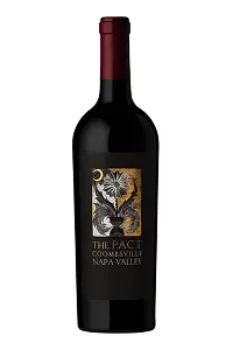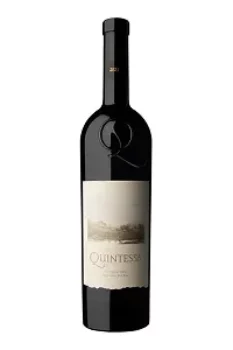Sweet white wines: the brands to look out for in 2025
From delicious white grapes come some of the best sweet white wines of the world. Our comprehensive guide explores everything you need to know—from grape varieties and production methods to selecting the best sweet white wine bottles and pairing suggestions—so you can savor these wines well beyond dessert.
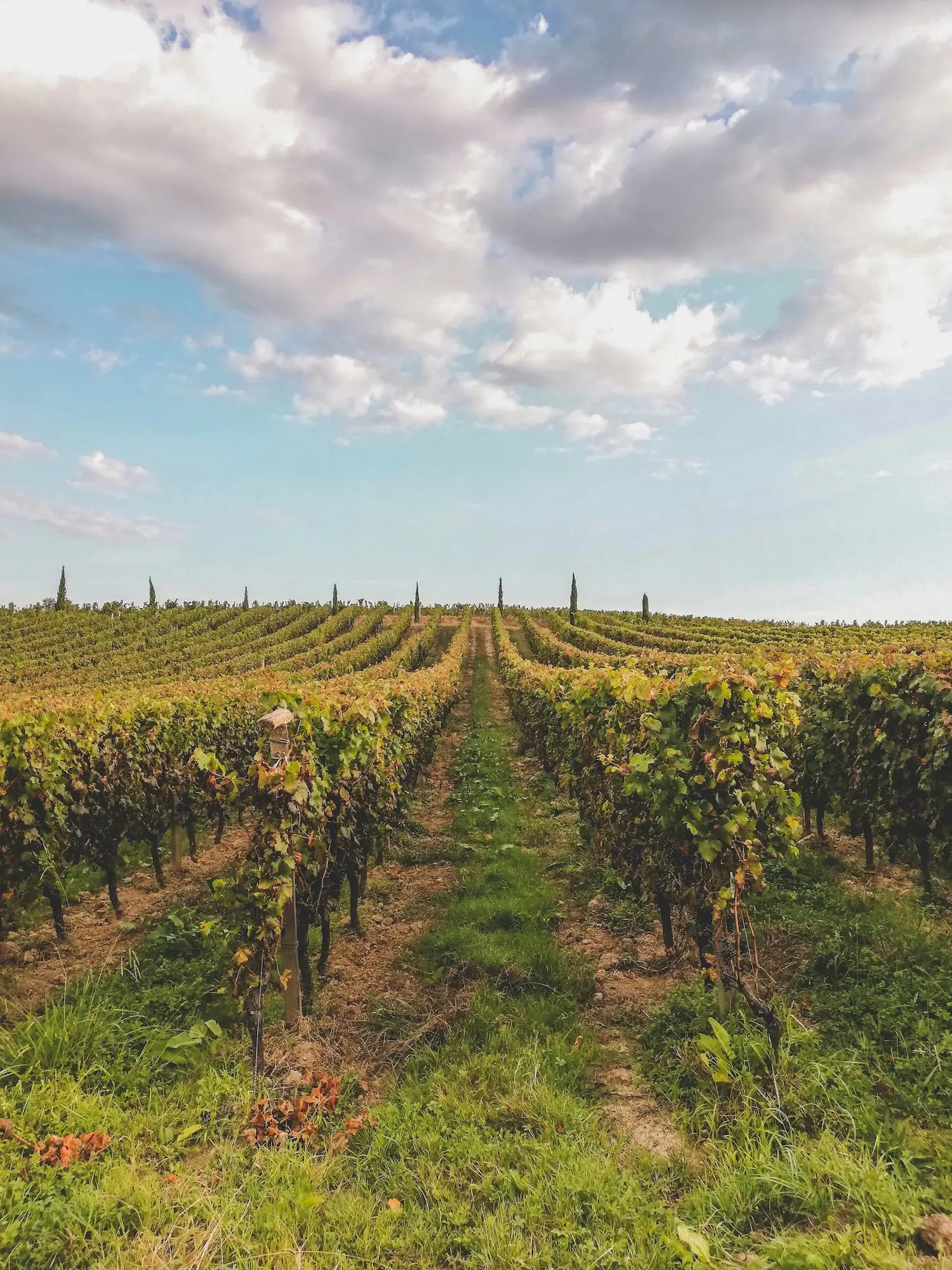
By
Last updated:
10 best sweet white wines with expert ratings and recommendations
The above list highlights the best rated sweet white wines from top producers. Featuring only the best sweet white wine brands, it’s your reliable reference for selecting quality bottles—whether for gifting, pairing, or collecting.
What is a sweet white wine and how is it made?
The secret behind every great bottle lies in the way how sweet white wine is made. While red and dry wines follow a classic process, sweet white wines need special care—especially during fermentation—to preserve their natural sugars and vibrant flavors.
To better understand what is a sweet white wine distinctive, it is important to explore the main production steps that contribute to its signature sweetness and flavor profile:
- Crushing: grapes are gently pressed to extract the juice.
- Fermentation: yeast turns sugar into alcohol, but for sweet whites, this process is often stopped early or modified to preserve residual sugar.
- Aging: while most white wines aren’t aged long, sweet white wines often spend more time resting in tanks or barrels to develop richer flavors before bottling.
Moreover, sweet white wines are made without fermenting the juice with grape skins, resulting in a lighter, fresher character.
Behind every bottle are naturally sweet white wine grape varieties. These include:
- Muscat
- Riesling
- Gewürztraminer
- Sémillon
- Chenin Blanc
- Malvasia
Sweet white grapes are nature’s candy—packed with natural sugars, which allows these wines to achieve their characteristic sweetness without extra additives.

Sweet white wine types: production styles that define the flavor
As we’ve mentioned, different grapes and production techniques bring out a variety of styles and flavors. To better understand the many sweet white wine types, it helps to look at a few key production styles:
- Natural sweet wines: fermentation is stopped early by cooling or adding sulfur dioxide, leaving natural sugars behind. This produces fresh, lightly sweet wines like Moscato d’Asti or off-dry Riesling.
- Passito and late harvest wines: grapes are dried on or off the vine to concentrate sugars, creating fuller, sweeter wines with dried fruit and honey notes. Examples of this good sweet white wine include Italy’s Passito and Germany’s Spätlese.
- Noble rot wines: grapes affected by Botrytis cinerea shrivel, concentrating sugars and adding honeyed, spicy flavors. Famous examples? Sauternes.
- Ice wines: grapes are harvested frozen, yielding intensely sweet, acidic wines, commonly from Canada and Germany.
Explore the wide world of types of sweet white wine—it’s the most delicious way to find your go-to bottle.
Sweet white wines by sweetness: what are the different levels?
White wines vary widely in sweetness—from barely noticeable hints to intensely sweet sensations. Unlike red wines, where tannins help balance flavors, white wines derive their sweetness mainly from residual sugars left after fermentation and the natural sugars present in the grapes.
To help you navigate sweet white wines by sweetness, we’ve put together a table outlining different sweetness levels, grape varieties, and a few suggestions to try. You can also refer to our white wine sweetness scale for a clearer understanding of where each wine falls—making it easier to find the style that suits your taste.
| Sweetness | Top Picks | Common Varietals | Residual Sugar (g/L) |
|---|---|---|---|
| Semi-Sweet | Semi Sweet Riesling 2015 by Zerba Cellars | Muscat, Riesling, Chenin BlancMuscat, Riesling, Chenin Blanc | 12–45 |
| Sweet | Late Harvest Gewurztraminer by Husch Vineyards | Riesling (late harvest), Gewürztraminer | 45–100 |
| Very Sweet | Sauternes by Château Laribotte | Sauternes, Ice Wine | 100–220+ |
Sweetest white wine: rich and dessert-ready
At the top of the sweetness scale, the sweetest white wine is intensely rich and often enjoyed in small pours as dessert wines. These wines are made from grapes with very high sugar content, sometimes enhanced by techniques like late harvesting, noble rot, or drying the grapes to concentrate sugars. Some of the most common grapes include Sémillon, Muscat, Riesling, and Pedro Ximénez.
Our pick of sweetest white wine: Château d’Yquem Sauternes (France) – A legendary, complex dessert wine with layers of honey, apricot, and tropical fruit. Perfect for special occasions.
Least sweet white wine: crisp and refreshing
The least sweet white wine sits at the entry point of the white wine sweet scale. These wines offer a noticeable touch of sweetness balanced by fresh acidity, making them versatile and approachable. Perfect for those who enjoy a hint of sweetness without overwhelming richness. Common grapes involved are Muscat, Riesling (Kabinett), Chenin Blanc (off-dry styles), and Pinot Blanc.
Our pick of least sweet white wine: Moscato d’Asti (Italy) – A lightly sparkling, low-alcohol wine with floral aromas and notes of peach and orange blossom. Refreshing, playful, and easy to love.
Non alcoholic sweet white wine
You don’t need a sweet white wine with high alcohol content to enjoy a truly satisfying and flavorful experience! In fact, some great sweet white wines are completely alcohol-free, making them a great option for those who prefer to skip the booze without giving up taste.
While alcohol free wines—especially dry or sparkling styles—are becoming more common, non alcoholic sweet white wine is still a bit harder to find. That being said, the selection is growing, and there are some surprisingly good choices available today. Here are three tasty picks, with ideal food pairings:
- Sauvignon Blanc (0.0%) – Le Petit Beret (France)
Food pairing suggestion: spicy Thai dishes or sushi. - Pierre Zéro Prestige White – Pierre Chavin (France)
Food pairing suggestion: soft cheese or fruit-based desserts. - Fre Alcohol-removed Moscato – Sutter Home (California)
Food pairing suggestion: vanilla cake or mild curries.
Alcohol free sweet white wine doesn’t mean flavor-free—these wines prove you can still enjoy a sweet wine moment, minus the alcohol.
Sweet white wine food pairing: the unexpected matches that work
One of the biggest challenges when enjoying wine is finding the perfect food pairing. This can be even trickier when it comes to choosing the best food to pair with sweet white wines, which are often automatically linked to desserts.
It takes a bit of experience—and, most importantly, tasting—to discover the best sweet white wine food pairings, but it is certainly possible! Below, you will see a list of popular sweet white wines and some unexpected matches that work just fine.
| Food | Sweet White Wine / Grape | Type & Structure |
|---|---|---|
| Foie gras, Fruit compote, Spicy Asian dishes | Urziger Wurzgarten Riesling Auslese 2020 – Dr. Loosen – Riesling | Semi sweet, honeyed, bright acidity |
| Spiced Sausage or Pâté, Cinnamon Spiced Desserts, Soft Cheese | Gewürztraminer Vendange Tardive – Hugel – Gewürztraminer | Semi sweet, aromatic, spicy |
| Foie Gras, Blue Cheese, Roasted Poultry, Creme Brûlée | Sauternes – Château d’Yquem – Sémillon, Sauvignon Blanc | Very sweet, rich, luscious |
| Fresh Fruit Salads, Creamy Desserts, Mild Cheese | Moscato d’Asti 2021 – Bricco dei Guazzi | Lightly sweet, fruity, floral, low alcohol |
| Aged Cheese, Nut Based Desserts | 6 Puttonyos (Gold Label) – Royal Tokaji Wine Company- Furmint, Hárslevelű | Very sweet, balanced acidity, complex, honeyed |
| Fruit Based Desserts, Blue Cheese, Smoked Salmon Appetizers | Vidal Icewine – Inniskillin- Vidal or Riesling | Very sweet, luscious, vibrant acidity |
| Spicy Barbecue, Pumpkin Pie, Baked Eggs | Fire by Night Chenin Blanc 2021 – Alheit | Sweet, rich, with vibrant acidity |
| Almond Cookies, Light Seafood Salads, Blue Cheese | Vin Santo di Montepulciano – Avignonesi- Trebbiano, Malvasia | Sweet, nutty, rich, smooth |
California sweet wine: top picks across the West Coast and sweet white wine Napa Valley
When most people think of California wine, big, bold reds usually come to mind. But the Golden State is also a major player when it comes to producing exceptional California sweet white wine! While wineries dot all 50 U.S. States, nearly 90% of the country’s wine production happens here, especially in iconic West Coast spots like Sonoma and Napa.
Forget typical sweetness—sweet white wine Napa Valley showcases remarkable balance, lush richness, and vibrant fruit, perfectly reflecting California’s sun-kissed essence.
Here’s an overview of the main regions, grape varieties, and popular sweet white wines worth exploring:
| Region / Grape | Top to Try | Characteristics |
|---|---|---|
| Napa Valley, CA, Riesling | Sweet Claire Late Harvest Riesling 2014 – Prager Winery & Port Works | Rich and sweet with balanced acidity and a clean finish. |
| Sonoma County, CA Sémillon |
Billet Doux Late Harvest Sémillon – Morlet | Deep crystal clear gold, intense and complex bouquet of dry apricot |
| Napa Valley, CA Muscat |
Moscato 2016 – St. Supery | Beautifully balanced with refreshing acidity |
| Napa Valley, CA Sémillon |
Sémillon de Soleil – Stony Hill | Unctuous texture and high acidity with aromas and flavors of ripe apricot |
| Sonoma County, CA Sauvignon Blanc |
Late Harvest Sauvignon Blanc – Bodkin | Pineapple flavors take center stage, layered beautifully with a lush texture |
| Modesto, CA Muscat |
Barefoot Moscato 2014 – Barefoot | Sweet and refreshing with mouth-watering |
Sweet white wines from: the taste of sunny lands
Italy boasts one of the world’s richest wine heritages. From North to South, every bottle tells a story of tradition, territory, and passion—often becoming true national icons. This is especially true for sweet white wines from Italy, beloved at home and celebrated globally.
Famous examples of sweet white wine from Italy like Moscato and Malvasia, are known for their aromatic charm. Below, you’ll discover a few recommended Italian sweet white wines that truly deserve a spot in your next tasting lineup:
| Region / Grape | Top Producers | Wine Style |
|---|---|---|
| Sicily Muscat of Alexandria |
Donnafugata, Planeta, Cusumano | Sweet, rich, and sun-dried dessert wine, grapes dried under the sun |
| Sicily Malvasia |
Tenuta di Castellaro, Pellegrino, Marco de Bartoli | Often made in a passito style with notes of dried fruit, herbs, and honey |
| Piedmont White Muscat |
Vietti, Michele Chiarlo, Ceretto | Lightly sparkling, sweet, and low in alcohol, extremely aromatic |
| Tuscany Trebbiano, Malvasia |
Avignonesi, Felsina, Castello di Ama | Oxidative and rich dessert wine, aged in small barrels |
| Sardinia Vernaccia |
Cantine Contini, Sella e Mosca, Silvio Carta | Oxidative, fortified or semi fortified, similar to sherry |
French sweet white wine: the timeless excellence
Curious about the world’s most sophisticated sweet wines? Look no further than France! This country crafts legendary sweet white wine with unmatched precision and tradition. Regions like Sauternes, Monbazillac, and Alsace produce rich, aromatic wines from Sémillon, Muscadelle, and Riesling.
Their complexity often comes from noble rot or late harvest, creating luscious layers of honeyed fruit, floral notes, and vibrant acidity. Below is a selection of sweet French white wine recommendations that are perfect for aging or pairing with desserts:
| Region / Grape | Top Producers | Wine Style |
|---|---|---|
| Bordeaux Sémillon, Sauvignon Blanc |
Château de Rayne Vigneau, Château d’Yquem, Château Guiraud | Lusciously sweet and complex, with notes of honey |
| Roussillon White Muscat |
Gérard Bertrand, Domaine Cazes, Mas Amiel | A fortified sweet wine with vibrant aromas and a silky texture |
| Alsace Riesling |
Gustave Lorentz, Domaine Paul Blanck, Domaine Albert Mann | Medium to high acidity keeps it fresh and balanced, even when quite sweet. |
| Bordeaux Merlot Blanc, Sémillon |
Cheval Quancard, Château Latour-Martillac, Clos Floridène | Lightly sweet, fruity, and easy-drinking |
| Alsace Gewürztraminer |
Willm Reserve, Domaine Bott-Geyl, Domaine Charles Frey | Rich, oily texture with lower acidity, offering lush sweetness |
German sweet white wine: from crisp to luscious delights
You think Germany is all about beer? Think again! Germany is also known for producing some of the world’s finest wines. While German sweet white wine might not be the first to come to mind for every wine lover, they’re highly valued by connoisseurs for their perfect balance and impressive aging potential.
Mostly from Riesling, these masterpieces get their concentrated sweetness from methods like late harvest, noble rot or even Eiswein. Let’s discover together some of the exquisite entries on our recommended German sweet white wines list:
| Region / Grape | Top Producers | Wine Style |
|---|---|---|
| Mosel Riesling |
Dr. Loosen, Joh. Jos. Prüm, Fritz Haag | Light, crisp, delicately sweet with high acidity |
| Mosel Riesling |
Selbach Oster, Dönnhoff | Very sweet, concentrated, with vibrant acidity and icy freshness |
| Baden Gewürztraminer |
Weingut Dr. Heger, Weingut Zähringer, Weingut Andreas Laible | Semi sweet, floral and spicy with lychee and exotic fruit notes |
| Rheingau Riesling |
Schloss Johannisberg, Weingut Peter Jakob Kühn | Richer and riper, honeyed fruit and spice |
| Rheinhessen Silvaner |
Weingut Wittmann, Weingut Gunderloch, Weingut Rappenhof | Juicy and medium sweet, with orchard fruit and minerality |
Sweet white wine varieties: grapes and characteristics
The distinct character of sweet white wine varieties comes directly from their grapes, each shaped by its unique growing region, or terroir. Sometimes, winemakers even blend different varieties—like Sémillon with Sauvignon Blanc—to craft complex, balanced wines.
Below, you’ll find a list of sweet white wine grapes, highlighting the diversity and artistry behind each bottle:
- Muscat: a white grape known for its aromatic, sweet-fruity character, often with floral and peach notes.
- Malvasia: an ancient white grape prized for its aromatic qualities, often used to produce wines with tropical fruit and floral aromas.
- Riesling: a cool-climate sweet white wine grape famous for its bright acidity and ability to develop high sugar levels.
- Gewürztraminer: a highly aromatic white grape with distinctive spicy, floral, and lychee-like aromas.
- Chenin Blanc: a versatile white grape that can ripen with high sugar while retaining acidity, adaptable to many climates.
- Sauvignon Blanc: a crisp, herbaceous white grape with fresh citrus, often used to add brightness in blends.
- Sémillon: a white grape with thin skins that ripens late and is susceptible to noble rot, contributing waxy, honeyed aromas and richness.
To help you discover these wines more deeply, our team of experts has selected several sweet white wine names to explore in detail below.
Sémillon: the noble grape of Bordeaux
Sémillon is a golden grape famous for its role in crafting some of the world’s most luxurious and expensive sweet white wine, especially from Bordeaux. It brings a rich, full body with notes of apricot and honey.
Its secret? It’s highly susceptible to noble rot, a special fungus that dehydrates grapes and concentrates their sugars and flavors, leading to incredible complexity.
Below some sweet Sémillon recommendations by our experts:
White Muscat: Mediterranean aromas in every sip
White Muscat is a truly special grape variety, highly cherished and widely grown in Italy. It’s the star behind the globally famous Moscato wine, celebrated for its wonderfully aromatic character and one of the best semi sweet white wines worldwide.
Fun fact: many believe it’s one of the most ancient grape varieties still cultivated today, with a history stretching back to ancient Greece!
Here are a few recommended White Muscat wines:
Vidal Blanc: the Canadian classic behind ice wine sweetness
Born from a French-American partnership, Vidal Blanc is a hybrid vine that is a true champ in chillier climates where other grapes might shiver. That’s why you’ll often find it thriving in places like Canada and the Great Lakes region.
Growers adore Vidal Blanc because it consistently yields beautiful, concentrated grapes perfect for sweet wines, especially luscious ice wines. A true standout variety in the world of white wine sweet styles!
In the table below are some recommended Vidal Blanc ice wines:
| Wine &Winemaker | Flavors | Structure |
|---|---|---|
| Vidal Blanc Ice Wine – Duck Walk (New York) | Baked apple, honey, toasted almond | Sweet, creamy mouthfeel, balanced acidity |
| Gold Vidal Icewine – Inniskillin (Canada) | Apricot, peach, honey, tropical fruits | Very sweet, rich and concentrated, high acidity |
| Icewine Vidal Blanc 2013 – Castel Grisch Estate Winery (New York) | Tropical fruit flavors such as apricot, peach, and honey. | Silky and smooth, with a lingering finish. |
Rare sweet white wine brands: how to build a collector’s cellar
More than just sips, some of the rarest sweet white wine brands are prized collector’s items. Valued for ageability and prestige, they’re perfect for investment or celebrating life’s greatest moments.
Why are these bottles so difficult to find? Here are some reasons:
- Limited production: meticulously handcrafted in small batches.
- Prestigious vineyards: grapes from legendary, proven terroirs.
- Exclusive access: availability often restricted to private lists.
Sweet white wine brands like France’s Château d’Yquem and Germany’s Egon Müller Scharzhofberger lead this elite group. Fun fact: an 1811 Château d’Yquem once sold for over $100,000, underscoring its legendary rarity and age ability.
Sweet white wine serving temperature: colder is better
If you want your sweet white wine to really shine, too warm or too cold won’t do! Mastering the sweet white wine serving temperature is where the magic happens! Serve it perfectly chilled, and you’ll unlock its full potential: its vibrant acidity will balance delightful sweetness, letting all those yummy fruit, floral, and even mineral notes truly pop.
While temperature is paramount, understanding additional factors like alcohol content (ABV), acidity, and aging potential can significantly enhance your appreciation. To guide you, the table below provides some examples featuring these key factors.
| Wine & ABV | Tannin / Acidity | Serving Temp | Aging Potential |
|---|---|---|---|
| Sauternes 2005 – Château d’Yquem – 13,5% ABV | Low tannin, high acidity | 46–50 °F | 30+ years |
| Scharzhofberger Riesling – Egon Müller – 8% ABV | No tannin, high acidity | 50–54 °F | 20–40 years |
| Vidal Icewine – Inniskillin – 9,5% ABV | No tannin, crisp acidity | 50 ºF | 10–20 years |
| Briccotondo Moscato d’Asti – Fontanafredda – 5% ABV | No tannin, light acidity | 43–46 °F | 1-3 years |
| Billet Doux’ Late Harvest Sémillon – Morlet – 17% ABV | Low tannin, rich acidity | 50-54 °F | 10-15 years |
How to store sweet white wine: our 5 secrets
To ensure your good sweet white wine always tastes its best, proper storage is essential. Without it, those delightful flavors and aromas can diminish, taking away from the wine’s unique charm.
Our team has put together some practical advice on how to store them effectively:
- Temperature: aim for a consistent 7-15°C (45-59°F). Large temperature swings are detrimental!
- Light & humidity: store bottles in a dark place, with humidity around 60-70% to keep corks in good condition.
- Position: always store corked bottles horizontally to prevent corks from drying out.
- Avoid: protect your wine from vibrations, strong odors, and direct sunlight or kitchen heat.
And here’s an extra tip for open bottles: always grab that cork stopper to reseal it securely!
Sweet white wine made simple for beginners
Ready to embark on your sweet white wine adventure independently? Picking a fantastic sweet white wine for beginners means matching its taste, structure, and sweetness to your preference, the occasion, or your meal.
To get you started, try these easy-to-love sweet whites:
- Moscato d’Asti (Italy)
Structure: light, bubbly, and fruit-forward.
Best for: fresh fruit or light desserts. - Late Harvest Riesling (Germany/USA):
Structure: crisp, with peach and honey notes.
Best for: creamy desserts or spicy dishes. - Sauternes (France)
Structure: rich, luxurious, with honeyed fruit.
Best for: foie gras or blue cheese.
When selecting, keep these factors in mind:
- Sweetness level: check terms like semi sweet or dessert wine.
- Food pairing: match wine sweetness to your dish for balance.
- Alcohol content: lower ABV (10-12%) wines are often lighter.
- Regional style: explore diverse regional expressions.
- Wine style: pick between sparkling, still, or fortified depending on the mood or meal you’re planning.
Armed with these insights, you can now confidently choose and savor your best sweet white wine for drinking!
FAQs Best sweet white wines
The top 5 of the sweetest white wines starts with Germany’s Oberhauser Brucke Riesling Auslese Goldkapsel 2001, a rich blend of ripe stone fruits and honey. California’s Shackled 2012 and Paso Robles Sweet 2014 follow with jammy berry and cherry notes. Germany’s Wehlener Sonnenuhr Gold Capsule Riesling Auslese 2023 offers tropical fruit sweetness, while France’s Quarts de Chaume 2002 delights with peach and fig nuances.
The best sweet tasting white wine is subjective, based on preference. However, highly regarded options known for their balance and complexity include French Sauternes, with its honeyed depth, and German Riesling Trockenbeerenauslese (TBA), prized for intense concentration. Ice Wines from Canada or Germany are also celebrated for vibrant sweetness. Ultimately, your perfect choice depends on your desired flavor and acidity balance.
For newcomers seeking a sweet white wine for beginners, Moscato d’Asti is highly recommended. This Italian white is light, sparkling, and offers approachable fruity sweetness, often with lower alcohol. Its inviting profile makes it incredibly easy to enjoy. Some off-dry or semi-sweet Rieslings, particularly German Kabinett or Spätlese styles, also offer a delightful introduction, balancing gentle sweetness with refreshing acidity
Different types of sweet white wine offer a range of flavors and textures. Moscato d’Asti is light, sparkling, and fruity. Late Harvest Riesling balances sweetness with acidity. Sauternes is rich and honeyed, while Ice Wine is intensely sweet, made from frozen grapes. Semi-sweet wines, like certain Chenin Blancs, provide a gentler sweetness that’s easy to enjoy and pair.
A sweet white wine is simply any white wine retaining a significant amount of grape sugar after fermentation. This “residual sugar” gives it a noticeable sweet taste, beautifully balanced by its natural acidity to prevent cloyingness. Winemakers use various techniques like late harvesting grapes, noble rot, or freezing grapes to achieve this sweetness. Popular examples range from light, fizzy Moscatos to rich, honeyed Sauternes
Most organic sweet white wines do contain sulfites. While “organic” certifies farming practices (no synthetic pesticides, etc.), it doesn’t automatically mean sulfite-free. Sulfites occur naturally during fermentation, and organic wines are still permitted a lower amount of added sulfites than conventional wines. If you’re sensitive to sulfites, always look for specific “sulfite-free” or “no added sulfites” labeling, which is a stricter standard
While moderate consumption of any wine might be part of a healthy lifestyle, claiming specific sweet white wine health benefits can be misleading. Like all wines, it contains alcohol, and sweet varieties also have higher sugar content. Any generalized benefits often linked to wine (e.g., antioxidants) are more commonly associated with dry red wines. Enjoy sweet white wine for its unique taste, not for health claims.
Yes, many sweet white wines can be aged beautifully, often surpassing their dry counterparts. Their high sugar and vibrant acidity act as natural preservatives, allowing them to evolve gracefully over decades. Fine examples like French Sauternes, German Riesling Trockenbeerenauslese, and even some Ice Wines are renowned for developing incredible complexity, with honeyed and nutty notes deepening over time
Sweet white wine, once opened, generally lasts longer than dry whites. Its higher sugar acts as a natural preservative. When properly re-sealed and refrigerated, most varieties maintain quality for 3 to 7 days. Very rich, high-acidity dessert wines might even extend up to two weeks. Using a vacuum pump or inert gas can further prolong freshness by minimizing oxygen exposure, preserving its delightful character.
When considering how many calories are in sweet white wine, remember they come from both alcohol and residual sugar. Generally higher than dry wines, a typical 5-ounce (147ml) serving can range from approximately 120 to 180 calories. The precise count varies significantly based on the wine’s alcohol by volume (ABV) and its specific sweetness level, with sweeter and higher-ABV options having more.
If you’re wondering what is a good semi sweet white wine, consider options that perfectly balance sweetness with refreshing acidity. Excellent choices include German Riesling (often labeled Kabinett or Spätlese), known for its vibrant fruit and floral notes. French Vouvray, made from Chenin Blanc in Demi-Sec styles, offers a delightful honeyed apple profile. Some off-dry Pinot Gris/Grigio also provide a pleasant hint of sweetness.
Let’s explore some sweet white wines that are widely enjoyed! Popular options include: Moscato d’Asti, light and sparkling; Late Harvest Riesling, known for its balanced sweetness; rich, honeyed Sauternes; and intensely sweet Ice Wine. Other delightful choices can be off-dry Gewürztraminer, specific sweet styles of Chenin Blanc, or rich Italian Recioto di Soave.
The difference between a sweet white wine and dry white wine comes down to residual sugar. Sweet white wines have more leftover sugar, giving them a noticeable sweetness. Dry white wines contain little or no residual sugar, resulting in a clean, crisp flavor without sweetness. This distinction impacts their taste, texture, and how well they pair with different food.





